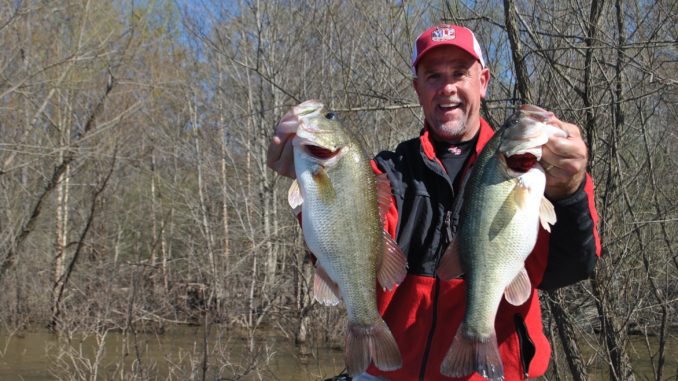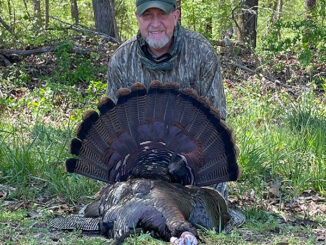
Expert tips on how to catch them
A long stretch of warm weather in mid-March has raised water temperatures in reservoirs across North Carolina and has largemouth bass poised to rush the bank and begin spawning.
Former bass pro Marty Stone of Fayetteville came to that conclusion on a trip to Falls of the Neuse Lake last Friday. A four-time Bassmaster Classic qualifier, found the lake level up a foot to 18 inches from a trip the previous week and the water temperature in the mid-60s.
After tying on a soft-plastic creature bait, adding a punch skirt and tungsten bullet weight, Stone spent eight hours flipping and pitching flooded bushes and trees and decided after about 15 bites that a bass are well on their way to the bank.
“Boy, this is really about to happen,” said Stone, who retired from full-time professional bass fishing six years ago and works as a stockbroker for Morgan Stanley. “They’re about to all come in here. If the little cold front that’s going to come through this weekend doesn’t mess it up too much, they could all be moving up next week.”
Stone never caught a fish in more than 18 inches of water Friday, fishing from the Ledge Creek area well up the lake, even well beyond the I-85 bridge. Most of his fish came out of flooded buck bushes, with a fish or two coming off flooded willows. His best fish was a 5-pounder; he lost one bigger, and his biggest five would have weighed about 17 or 18 pounds.
“These fish are getting ready to all move in,” said Stone, who targeted outside bushes where, he explained, fish would move to after coming out of the deeper water of creek channels and heading shallow. Outside bushes that produced bites were on points, on corners and on banks where he could position his boat in 2 1/2 to 3 feet of water and pitch even shallower. He fished many stretches of bank fruitlessly, only to pull onto a 200-yard stretch and get three or four bites.
“You have to find an area, a good stretch of bank, where they’re moving up,” he said. “You’re not really looking to pattern the fish; you’re just looking for areas where fish are moving up and are active.”





Be the first to comment